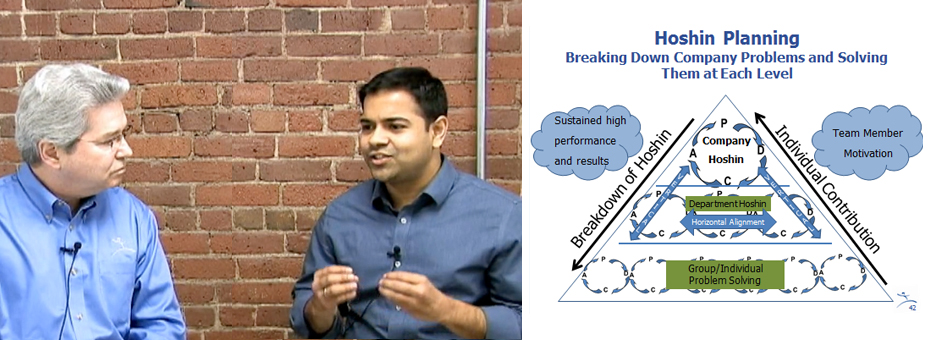Are you “chasing too many rabbits?”
It’s a vivid way of describing the tendency companies have to annually set more strategic objectives than we can possibly implement successfully. The annual “chase” results in delays, discouragement, and the diversion of resources from activities that should — and realistically can — be accomplished. But how do you deselect “rabbits”? And when you’ve targeted the vital few objectives to pursue, how will you plan, manage, and execute them? And how can you do it in a way that aligns and engages everyone in every function with the objectives?
We struggle with these questions, just like you probably do every year. So, I thought I’d talk to Jikku Mohan, LEI’s product and services strategy manager, to share our process of strategy deployment, aka hoshin kanri. Many of you probably use it, too. “The way we use it at the Lean Enterprise Institute, is as a management framework that systematically helps with the formulation of planning and deployment of strategic priorities,” Jikku explains.
Strategy deployment puts “intense focus” on the capability development of people and processes, while ensuring there is alignment and engagement from workforce, Jikku says. He’ll show you how that works by walking you through the graphic we developed to illustrate the process, including the role of “catchball.” This back-and-forth dialogue between senior managers and project teams builds alignment and engagement by tossing ideas back and forth, like the ball in a game of catch.
You’ll also hear:
- What is strategy deployment?
- Why is it important?
- How does it differ from traditional planning?
Checkout the video, ask a question, or leave a comment about how you use strategy deployment.
If you’re ready for hands-on training in how to improve your strategic planning process, review the two-day workshop in strategy deployment taught by Jikku or LEI COO Mark Reich.




